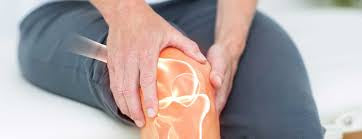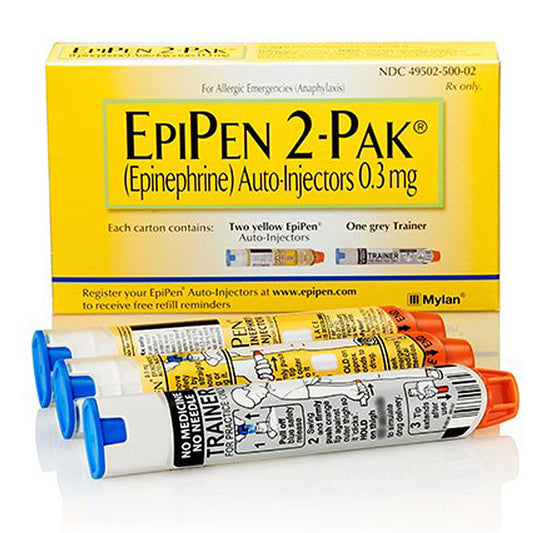
Treatment of a Strained Knee
William BeauregardShare
Dealing with a strained knee can be a painful and frustrating experience, but with the right treatment and care, most people are able to fully recover and avoid future injuries. In this blog post, we'll discuss the causes of a strained knee, the symptoms, and the best ways to treat and prevent this condition.
What is a strained knee?
A strained knee occurs when one or more of the muscles, tendons, or ligaments in the knee joint are stretched or torn. This can happen as a result of sudden movements, overuse, or direct trauma to the knee. Athletes who participate in sports that require jumping, twisting, or sudden stops and starts are especially prone to knee strains.
Symptoms of a strained knee
The symptoms of a strained knee can vary depending on the severity of the injury, but may include:
- Pain in the knee joint
- Swelling and inflammation
- Stiffness and difficulty moving the knee
- Bruising or discoloration
- A popping or tearing sensation at the time of injury
If you experience any of these symptoms, it's important to seek medical attention right away to determine the extent of the injury and receive appropriate treatment.
Treatment for a strained knee
The treatment for a strained knee will depend on the severity of the injury, but may include:
- Rest: It's important to avoid putting weight on the affected knee and limit activities that require you to bend or twist your knee until it has fully healed.
- Ice: Applying ice to the knee for 20-30 minutes at a time, several times a day, can help reduce swelling and inflammation.
- Compression: Wearing a compression bandage or sleeve around the knee can also help reduce swelling and provide support to the joint.
- Elevation: Elevating your knee above your heart for several hours a day can also help reduce swelling and promote healing.
- Physical therapy: Depending on the severity of the injury, your doctor may recommend physical therapy to help strengthen the muscles around your knee and improve flexibility and range of motion.
- Medications: Over-the-counter pain relievers like ibuprofen or acetaminophen may be recommended to help manage pain and inflammation.
Preventing future knee strains
To prevent future knee strains, there are several steps you can take:
- Warm up: Always warm up before exercising or participating in sports to help prevent injuries.
- Wear proper footwear: Make sure you're wearing shoes that provide good support and cushioning, especially if you're participating in high-impact activities.
- Strengthen your muscles: Strengthening the muscles around your knee, such as your quadriceps and hamstrings, can help provide more support to the joint and reduce the risk of injury.
- Maintain a healthy weight: Excess weight can put extra strain on your knees, so maintaining a healthy weight can help reduce your risk of knee strains and other knee injuries.
In conclusion, a strained knee can be a painful and debilitating injury, but with the right treatment and care, most people are able to fully recover and prevent future injuries. If you experience any symptoms of a strained knee, it's important to seek medical attention right away to receive appropriate treatment and prevent further damage to the joint.
What is a strained knee?
A strained knee occurs when one or more of the muscles, tendons, or ligaments in the knee joint are stretched or torn. This can happen as a result of sudden movements, overuse, or direct trauma to the knee. Athletes who participate in sports that require jumping, twisting, or sudden stops and starts are especially prone to knee strains.
Symptoms of a strained knee
The symptoms of a strained knee can vary depending on the severity of the injury, but may include:
- Pain in the knee joint
- Swelling and inflammation
- Stiffness and difficulty moving the knee
- Bruising or discoloration
- A popping or tearing sensation at the time of injury
If you experience any of these symptoms, it's important to seek medical attention right away to determine the extent of the injury and receive appropriate treatment.
Treatment for a strained knee
The treatment for a strained knee will depend on the severity of the injury, but may include:
- Rest: It's important to avoid putting weight on the affected knee and limit activities that require you to bend or twist your knee until it has fully healed.
- Ice: Applying ice to the knee for 20-30 minutes at a time, several times a day, can help reduce swelling and inflammation.
- Compression: Wearing a compression bandage or sleeve around the knee can also help reduce swelling and provide support to the joint.
- Elevation: Elevating your knee above your heart for several hours a day can also help reduce swelling and promote healing.
- Physical therapy: Depending on the severity of the injury, your doctor may recommend physical therapy to help strengthen the muscles around your knee and improve flexibility and range of motion.
- Medications: Over-the-counter pain relievers like ibuprofen or acetaminophen may be recommended to help manage pain and inflammation.
Preventing future knee strains
To prevent future knee strains, there are several steps you can take:
- Warm up: Always warm up before exercising or participating in sports to help prevent injuries.
- Wear proper footwear: Make sure you're wearing shoes that provide good support and cushioning, especially if you're participating in high-impact activities.
- Strengthen your muscles: Strengthening the muscles around your knee, such as your quadriceps and hamstrings, can help provide more support to the joint and reduce the risk of injury.
- Maintain a healthy weight: Excess weight can put extra strain on your knees, so maintaining a healthy weight can help reduce your risk of knee strains and other knee injuries.
In conclusion, a strained knee can be a painful and debilitating injury, but with the right treatment and care, most people are able to fully recover and prevent future injuries. If you experience any symptoms of a strained knee, it's important to seek medical attention right away to receive appropriate treatment and prevent further damage to the joint.



